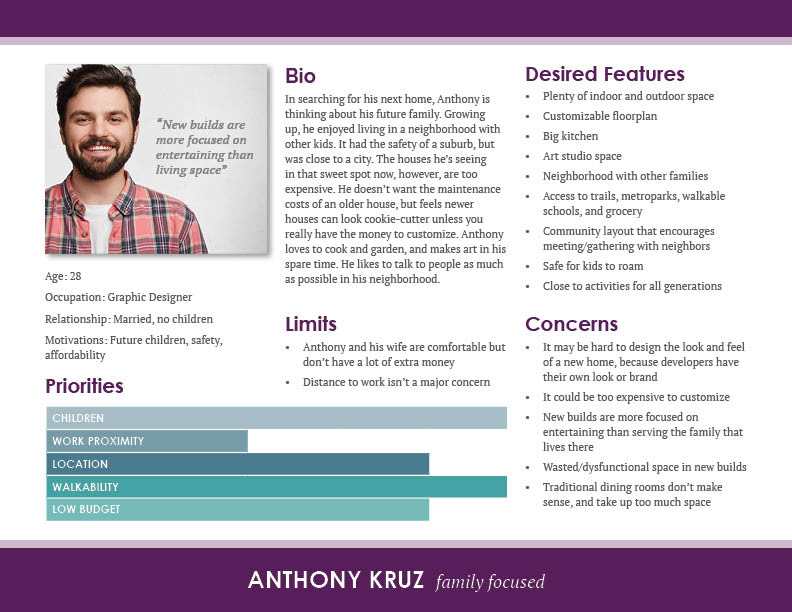UX Case Study: Roost
Build a cartoon house in your style, with custom features. Share your design with friends, and find real-life homes with similar features.
OvervieW
This project addresses a need for housing that more closely matches the preferences of new generations of homebuyers. These buyers may be more interested in sustainability and versatile living spaces than three-car garages, but new-build houses haven’t evolved to meet their needs.
With Roost, users can create their own model home, share with friends, and find similar houses in their area. The app design is packed with information about architecture and sustainability, enabling users to communicate about housing more effectively.
user Frustrations
Users had common frustrations with available housing designs, and agreed there is no good and non-expensive way to explore styles and features that they would prefer in a new house.
Users' frustrations with new housing:
Poorly designed
Too few options for customization
Not sustainable
No incentive for builders to change
Too few options for customization
Not sustainable
No incentive for builders to change
Solution
Customization is key!
I designed a tool for users to express their style by creating custom houses and sharing. The app recommends houses with similar attributes for sale in the user’s area. My prototype also has the potential to group users based on location and style preferences, then interface with builders.
Process
Research Approach
I gathered insights from people looking to buy a home in the next few years, who feel current options don't meet their needs. I also researched what motivates builders.


Research MEthods
Questionnaires | Interviews
Affinity mapping | Empathy Maps
Personas | User stories
Prototype testing | Market analysis
Affinity mapping | Empathy Maps
Personas | User stories
Prototype testing | Market analysis
Meet the Users
I identified two personas through my research:
1. Family Focused
"New-builds are more focused on entertaining than living space"
The Family Focused (FF) user wants a community where kids can roam, and home features for all generations. The FF doesn't want wasted space or areas that are hard to clean, but may want to accommodate multiple generations in their new house's design.
2. Young Professional
"New development is geared to families, rather than young professionals"
The Young Professional (YP) wants to be connected to city centers. The YP needs less overall space, but looks for a home office and other work spaces.


Heuristics
Using Jakob Nielson's principals, I conducted a heuristic evaluation of three apps related to mine: NextDoor, Houzz, and Homeadvisor. Through this analysis, I discovered features to include (and not) in my app.




User Stories, Sitemap, and Flows
After synthesizing my research, I identified the MVP. Potential users would be most interested in customization, recommendations, and connecting with other people. Budget was also a major concern for everyone I heard from. Moving forward with the structure of the app, I created a sitemap and red routes.


Sketches
With my sketches, I developed a low-fidelity prototype of my app in Marvel.






User Feedback
From guerrilla user tests I drew several insights, including the following:
1. Fun, light-hearted pages were intermixed with serious stuff, like contacting builders. The serious pages could alienate casual users
2. The profile section of the app was too complicated
3. The outcome of the experience was not clearly defined in the flow of the app
Based on this feedback, I implemented several changes to the next iteration of the project:
To give the app more of a game-like quality, I combined the questionnaire section with the home customization tool. Rather than indirectly asking questions about the user's preferences and generating a customized plan, the user can directly customize with illustrated options. The user's final design is more like an avatar that can be easily shared on social media. Also, the profile section was simplified to a dashboard, accommodating multiple designs.
Takeaways
The final iteration of this project turned out to be more light-hearted than the original idea, with a more focused MVP. By making the app more fun to use, it will reach a wider audience. Educational nuggets buried throughout the app are available for users interested in learning more about sustainability, better home design, and neighborhood layout. By sharing the plans they create and "like" on social media, users may start conversations about these topics, and become advocates.

